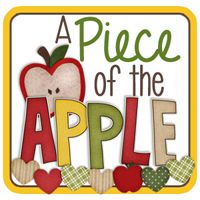If you missed my previous posts you can find them below:
Chapter 1
Chapter 2
Chapter 3
Chapter 4
Today I am linking up with Melissa from Dilly Dabbles who is hosting today's chapter.
My thoughts on Chapter 5:
Summer time is the perfect time to work on a book study like this. It gives me a chance to reflect on all of the areas that went well in my classroom, as well as an opportunity to brainstorm ways to improve things that did not go over quite as well. As I read through this book I have several a-ha moments about both. Many of the practices that went well (independent reading for most of my students was very strong) are ones that the author advocates using. I have found a wealth of ideas for areas that I would like to improve such as writing and adding more time for social studies and science.
Chapter 5 details how to carve out a block of time in your literacy block for direct instruction of writing. Donohue states that you can use this time to model new forms of writing, explore mentor texts, determine success criteria, topic selection, mini-lessons on grammar, and much more. I know I hit some of those things last year, but I would like to go deeper with that.
Research states that teachers need to model thinking and composing strategies when teaching writing. - THIS is what I need to be doing more of. I occasionally modeled writing (and got much stronger written papers from my students) but I need to do this all of the time.
Donohue also offers some great questions to ask students as you explore mentor texts as writers. Many of these questions such as "How does the author use descriptive writing and clear evidence to support his/her work?' align with the Common Core and will really stretch my students.

As I read more and more, I am beginning to give myself permission to do less. Many of the comments on my previous post involve teachers saying they do not have enough time in the literacy block. I have felt that way myself and we have 120 minute blocks of time set aside just for literacy - and yet it is never enough. I think that limiting myself to the 100 minutes (and freeing up additional time for social studies and science - which will also have elements of literacy in them) and making that time more purposeful will be better than 120 minutes of just good enough instruction. Do I really need to spend 20-30 minutes on word sorts when students don't transfer those spelling skills to their writing? Please tell me I'm not the only one who feels this way!
I will definitely be modeling writing in my classroom more. Students need to know what my expectations are otherwise they will hand in superficial responses and ask "How many sentences do we need to write?"
We already use Marzano strategies at our school, so I love the idea of having students help generate the success criteria.
I will definitely be modeling writing in my classroom more. Students need to know what my expectations are otherwise they will hand in superficial responses and ask "How many sentences do we need to write?"
We already use Marzano strategies at our school, so I love the idea of having students help generate the success criteria.

What mentor texts will I use and why? What technique do I want them to notice and use?
How will I plan lessons that fit into our instructional units but also allow time to address student needs?
Next up- Chapter 6: Exploring Different purposes and Audiences
Be sure to visit Erin from A Piece of the Apple on June 13th to continue this learning journey with us. She will be hosting chapter 6.






I think you've hit the nail on head with your comments about less being more...a fellow teacher and I have this discussion all the time and I think it's what I like about the 100 Minutes framework vs the Daily 5...it allows time to go deeper into things instead of skimming everything. Great post.
ReplyDeleteBeth
Thinking of Teaching